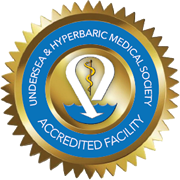Strong Wound Healing Center
Brighton
-
Surgery Center at Sawgrass
Contact
Phone
Fax
Hours
Monday–Friday 8 a.m.−4:30 p.m.
Overview
At the Strong Wound Healing Center, our staff is highly trained in the specialized, comprehensive care of wounds. We use the most up-to-date approaches in the science of wound care.
We specialize in treating non-healing wounds caused by the following conditions:
- Diabetes
- Osteomyelitis
- Pressure ulcers
- Soft tissue radiation injury
- Neuropathic ulcers
- Osteoradionecrosis
- Necrotizing infections
- Non-healing surgical wounds
- Traumatic injuries
- Wounds of arterial, venous, or lymphatic origin
- Abscesses
- Skin tears
- Hidradenitis
Wound Nurse Certifications
Wound care certification demonstrates a distinct and specialized knowledge in wound management, thereby promoting quality of care for persons with wounds.
Hyperbaric Certifications
Team members working with patients receiving hyperbaric oxygen therapy hold certification and membership in hyperbaric organizations including Undersea & Hyperbaric Medical Society and the Baromedical Nurses Association. All team members participate in continuing education directly related to hyperbaric medicine.
Services
Treatment Tailored to Your Needs
Because every patient’s wound is unique, you will have a thorough diagnostic exam to identify the type of wound you have and its underlying causes. A program specifically tailored to your needs will be started based on the most effective approach, which may include:
- Vascular evaluations
- Debridement
- Laboratory evaluations
- Hyperbaric Oxygen Therapy (HBO)
- Transcutaneous oxygen monitoring
- Nutritional evaluations
- Pain assessment
- Diabetic education
- Radiology evaluations
- Mobility assessments
Your treatment team will also identify which dressings and/or treatments are right for your wound, such as:
- Specialty dressings, hydrocolloid, hydrogel, alginate, etc.
- Multi-layer compression wraps
- Total contact casts
Providers
Our team also includes registered nurses who receive additional training to care for patients with wounds.
Registered Nurses
- Michele Atkinson, RN, BS
Hyperbaric Safety Coordinator - Rebecca Bush, RN, BSN, CHRN WTA-C
Registered Nurse - Carly Cellura, RN, BS, WCC
Registered Nurse - Emily English, RN, BSN
Registered Nurse - Yvette Hale, RN, BS
Registered Nurse - Colin Smith, RN
Registered Nurse - Jennifer Wright, RN, BSN, CWCN, ACHRN
Senior Assistant Nurse Manager
-
Accepting New Patients
-
Accepting New Patients
-
Accepting New Patients
-
Accepting New Patients
-
Accepting New Patients
-
Accepting New Patients
-
Accepting New Patients
-
Accepting New Patients
-
Accepting New Patients
-
Accepting New Patients
-
Accepting New Patients
-
Accepting New Patients
-
Accepting New Patients
-
Accepting New Patients
-
Accepting New Patients
-
Accepting New Patients
Additional Information
You may call the Wound Healing Center directly or be referred by your doctor. To make an appointment directly, call (585) 262-9100.
Non-healing wounds can result from a number of factors, including diabetes, poor circulation, trauma, vascular disease, and immobility (which can lead to pressure ulcers, commonly known as "bed sores"). An estimated eight million Americans suffer from chronic wounds. Wounds come from a variety of different medical conditions, and they don't heal for many different reasons.
No. In fact, the Wound Healing Center prefers to work with your physician or medical specialist during the treatments. We even keep your doctor informed with frequent progress reports. While you’ll be receiving treatment for your wound from the Wound Healing Center, you’ll continue to receive all of your routine care from your primary physician.
Many health plans cover Wound Healing Center treatments. Call us to determine what your specific plan covers.
The first appointment consists of an assessment by our skilled wound care team includes a review of your medical history, blood tests, taking wound photos and measurements in addition to starting a treatment plan. Please be sure to bring to this appointment your medical records, insurance information, a list of current medications, and a list of your allergies.








